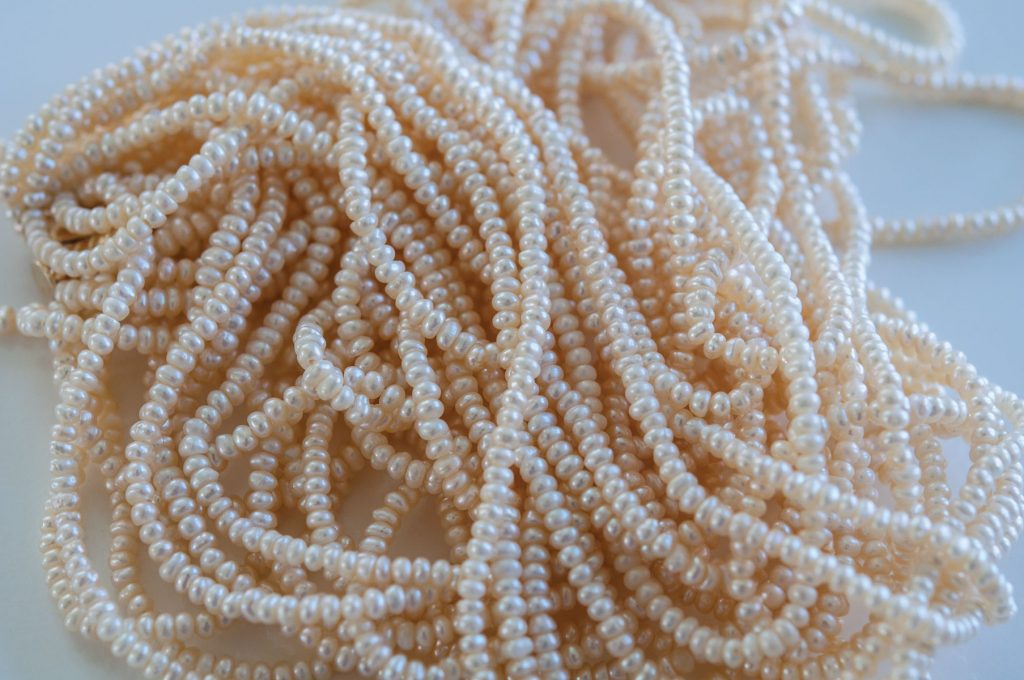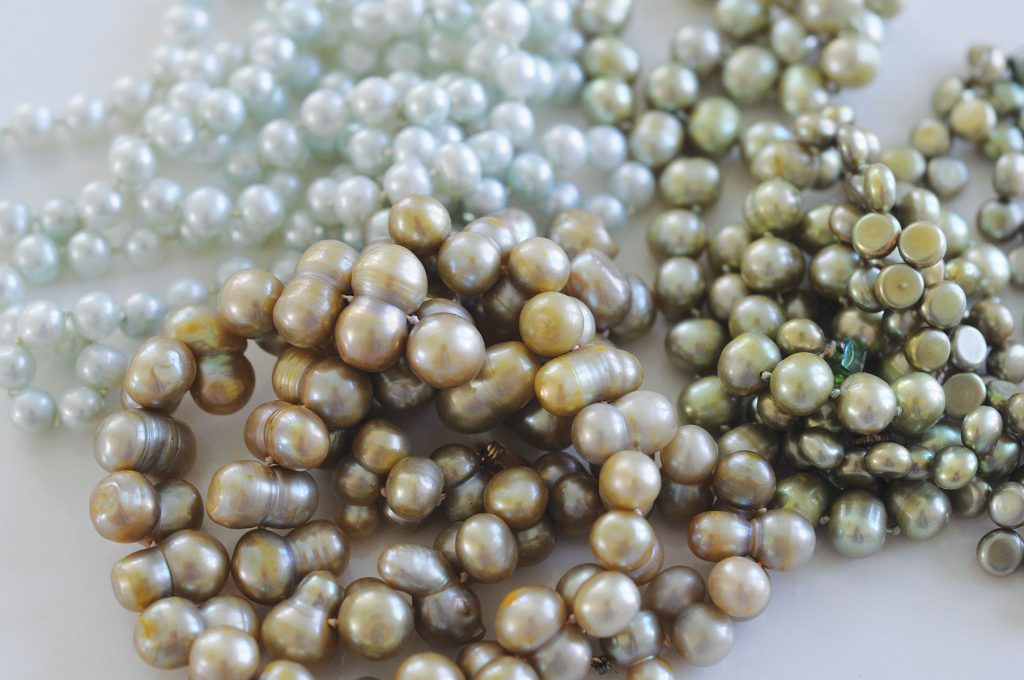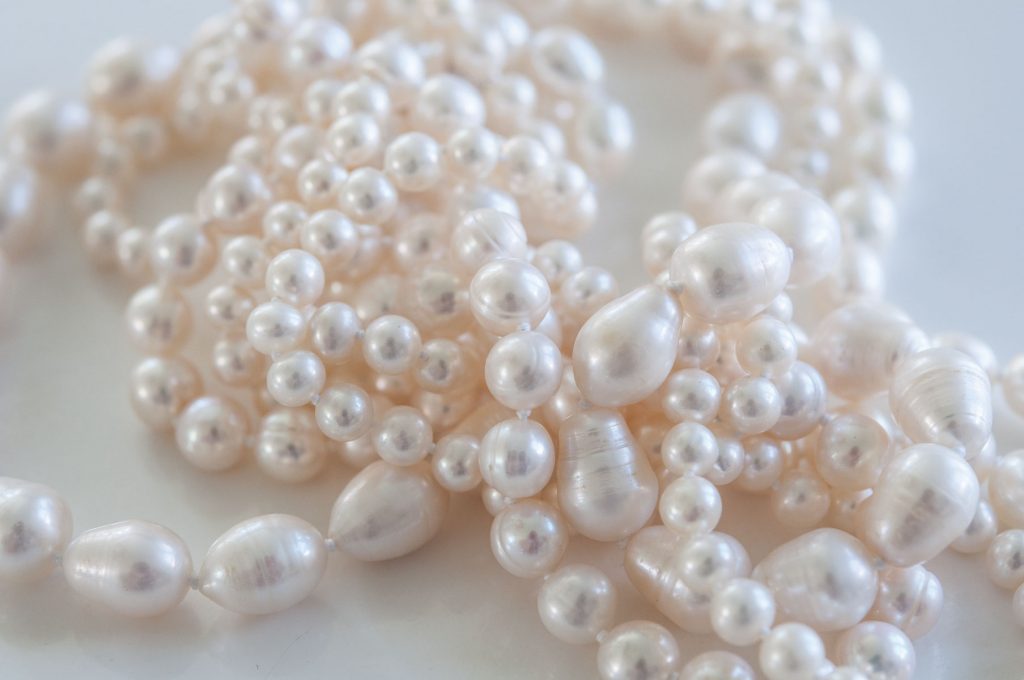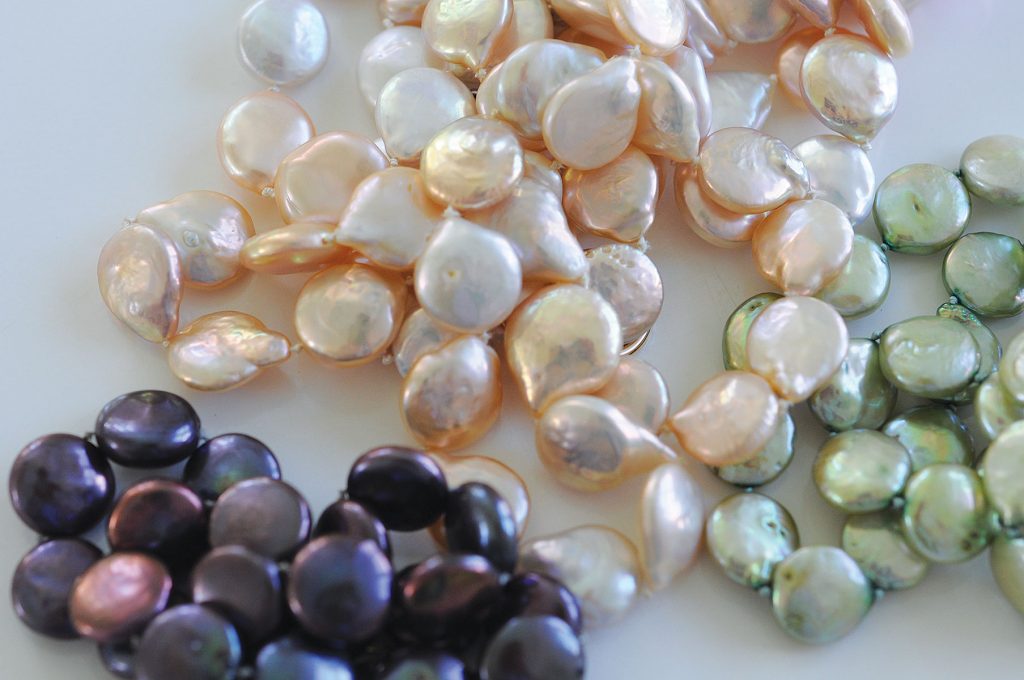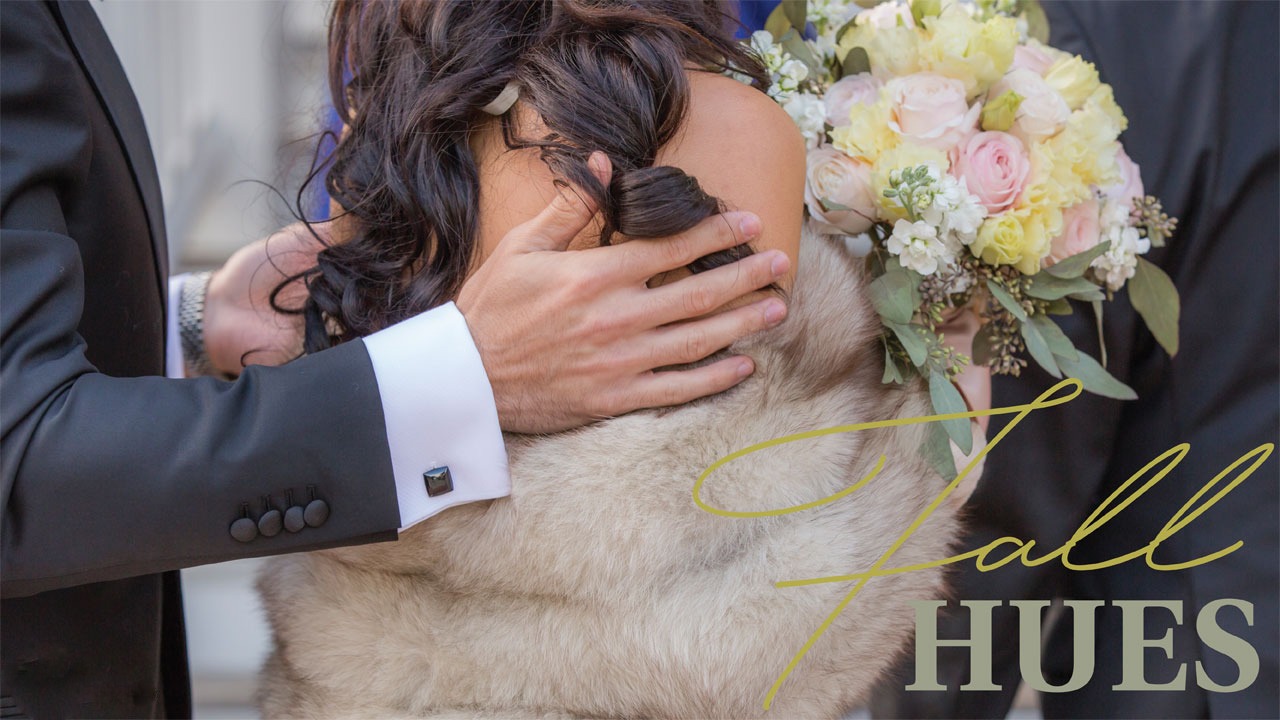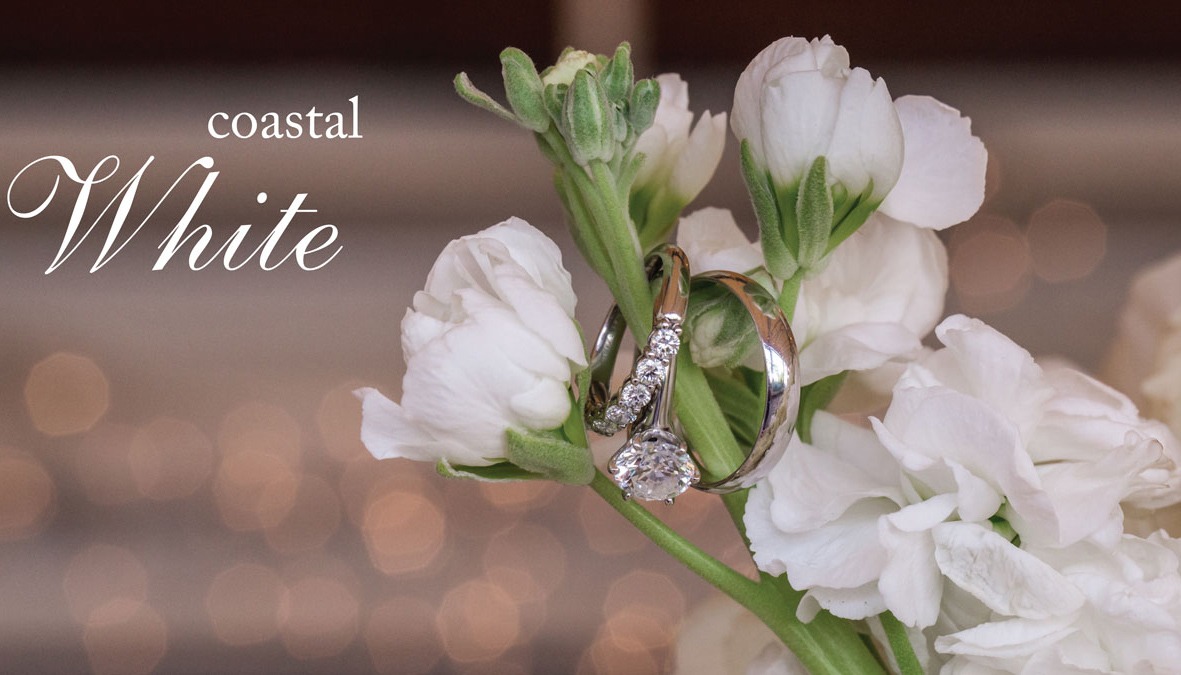Pearls are treasures from nature…
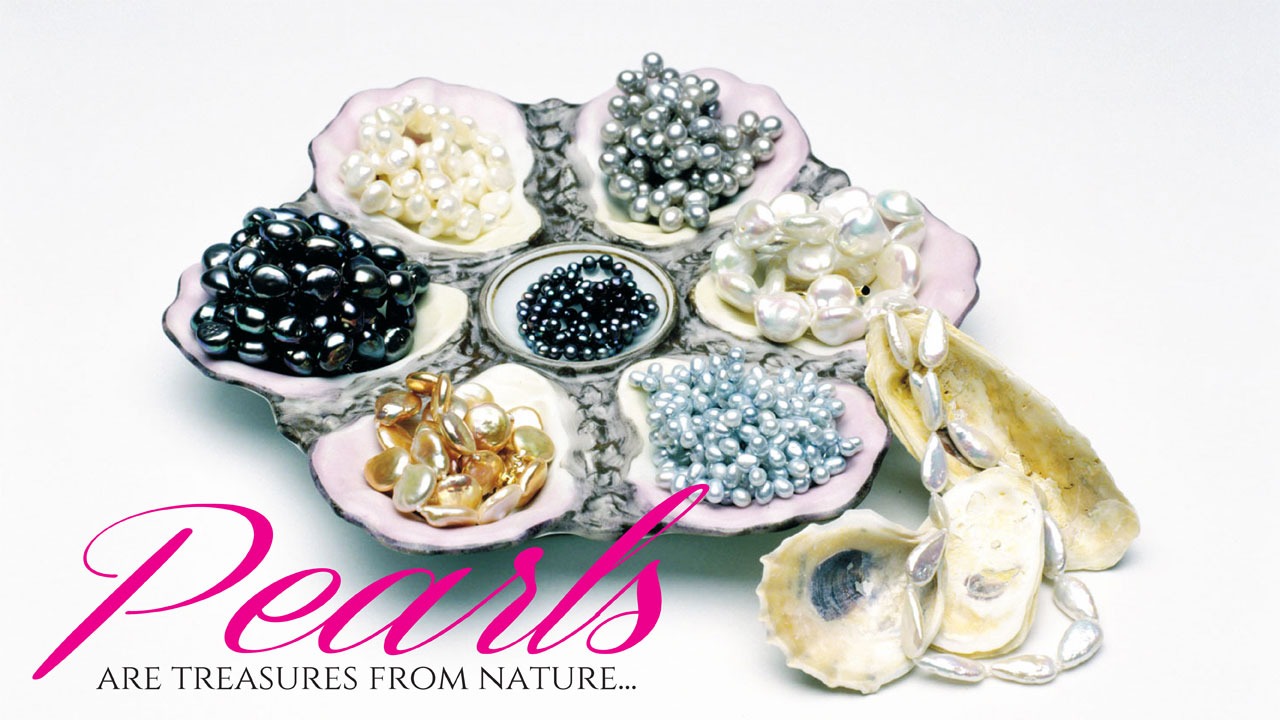
By Deborah Anderson
photos by Jack Weinhold
Appreciation for these natural beauties began more than 5,000 years ago – long before the discovery of diamonds. From the Roman Empire to the present day, pearls have been treasured, traded, bought and stolen. They are among the world’s most coveted gemstones. Only a pearl arrives in a finished condition from its natural source – a saltwater pearl oyster or a freshwater pearl mussel.
Pearls become heirlooms and with the proper care will last for generations. A pearl is unique. It is the only gem created by a living creature! It is produced by nature and comes ready to wear! It is neither cut nor polished. When a gift of pearls is given, remember how significant their development is, and you will then realize how special the gift.
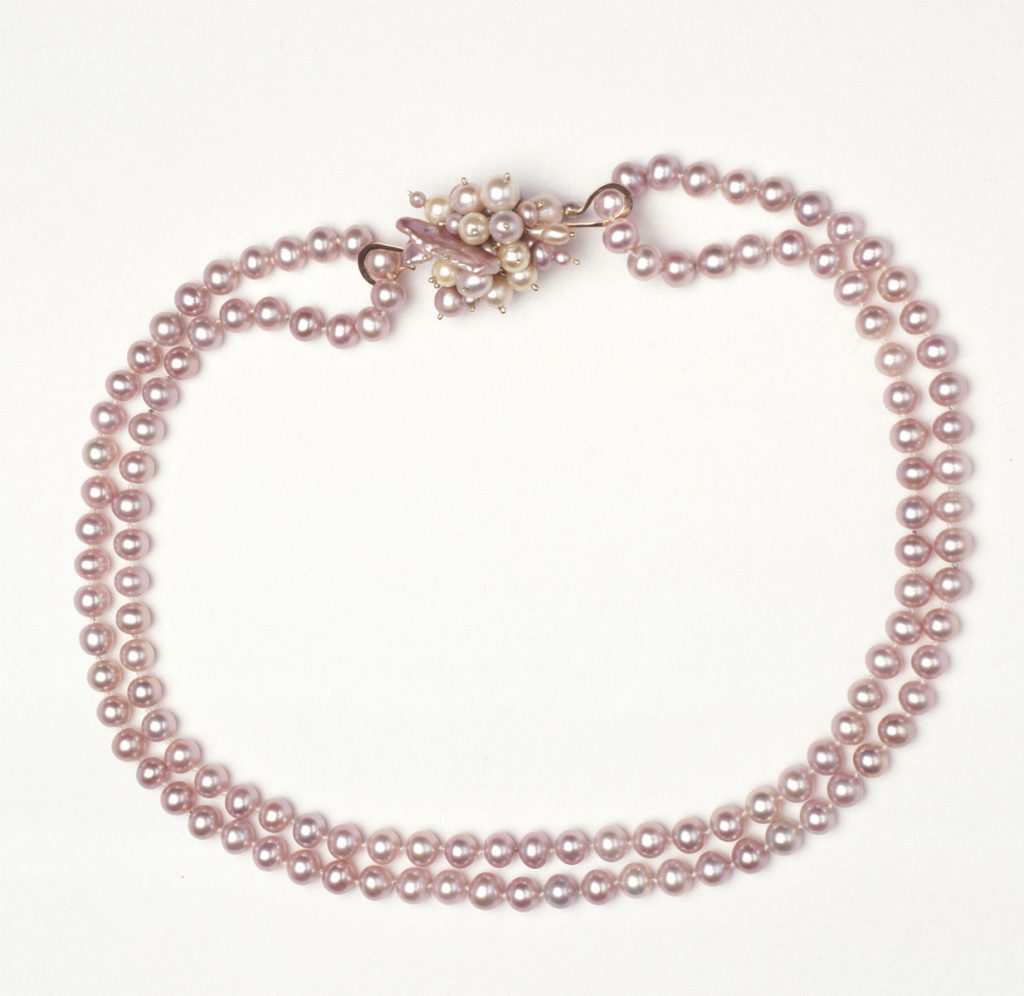
Jack Weinhold 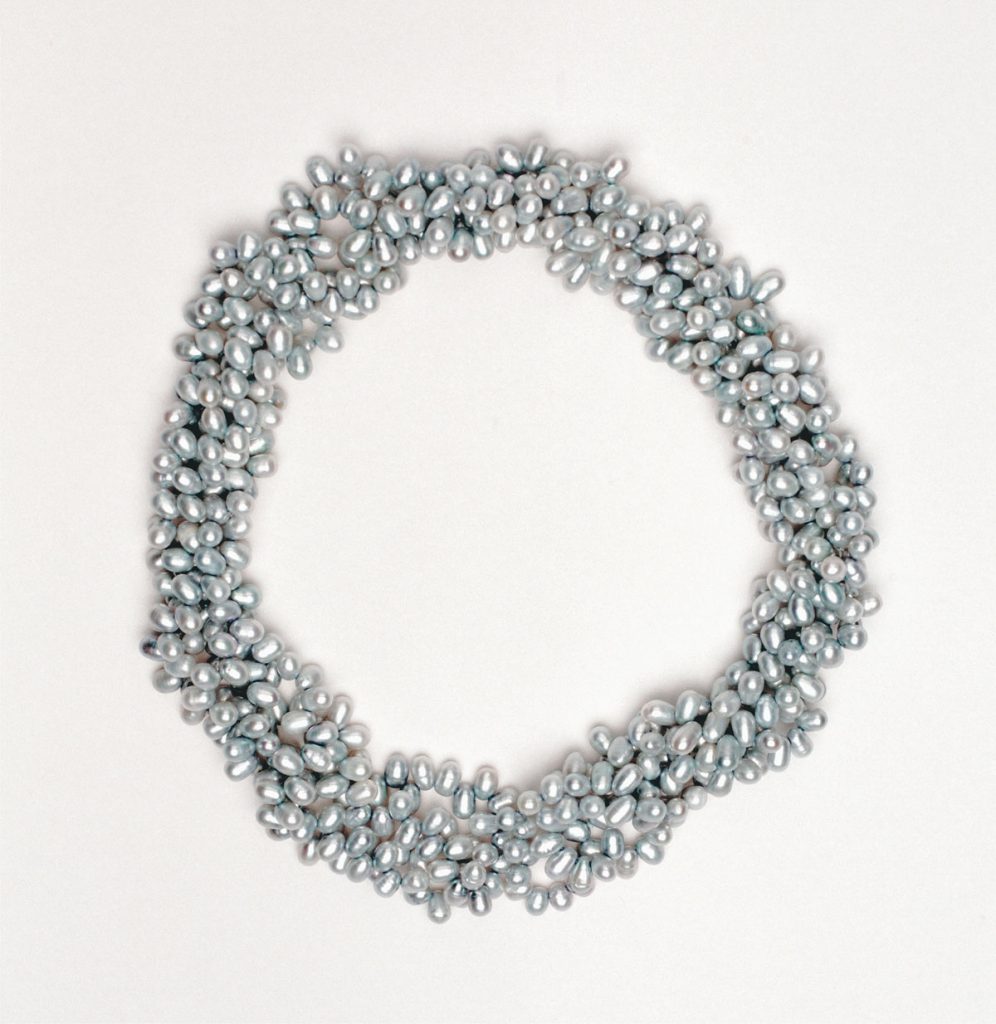
Freshwater Rice
Jack Weinhold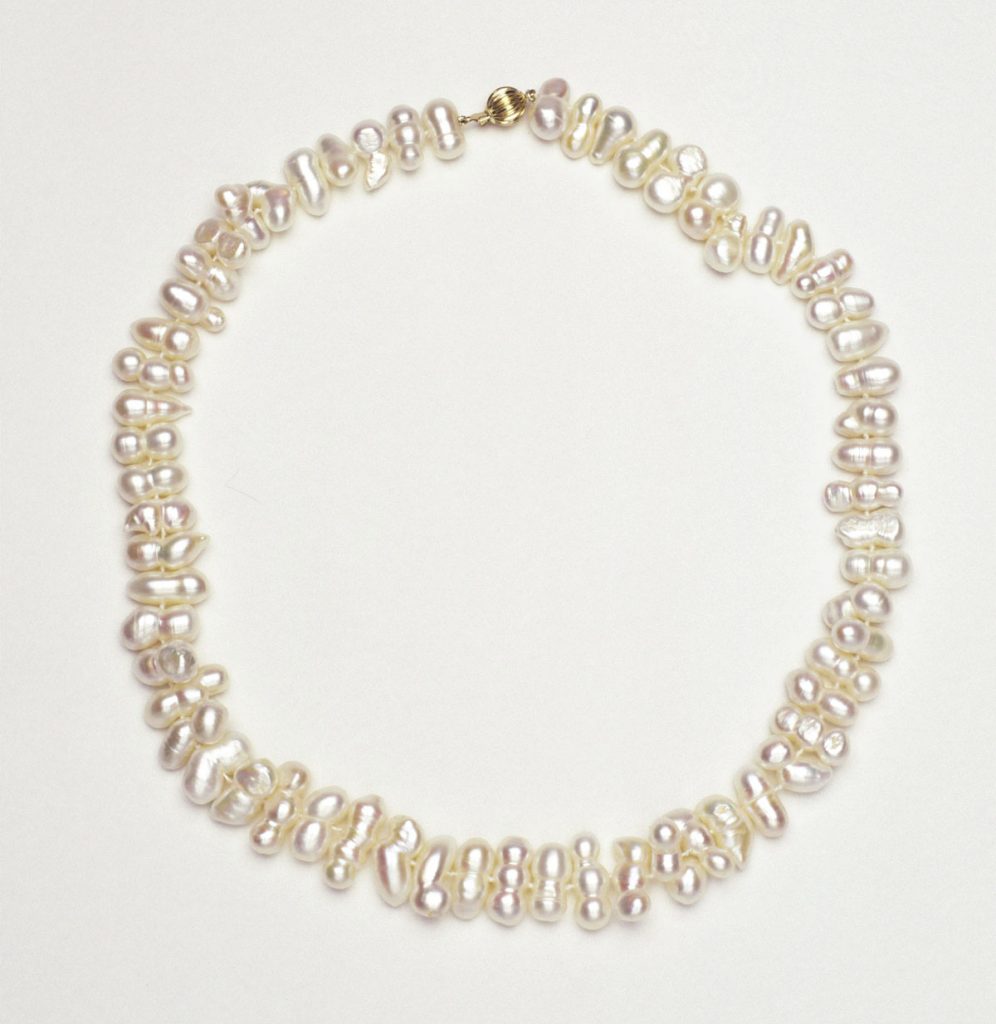
Freshwater Twin
Jack Weinhold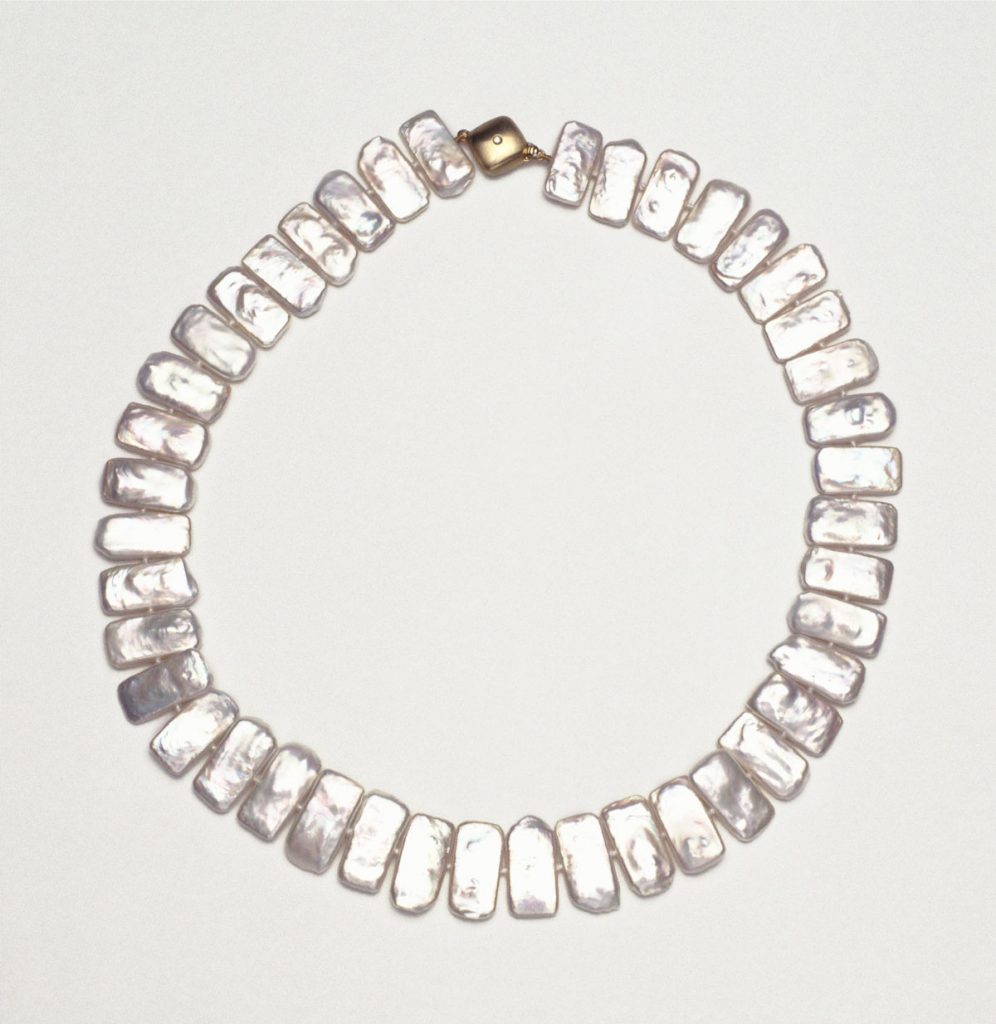
Freshwater – Coin
Jack Weinhold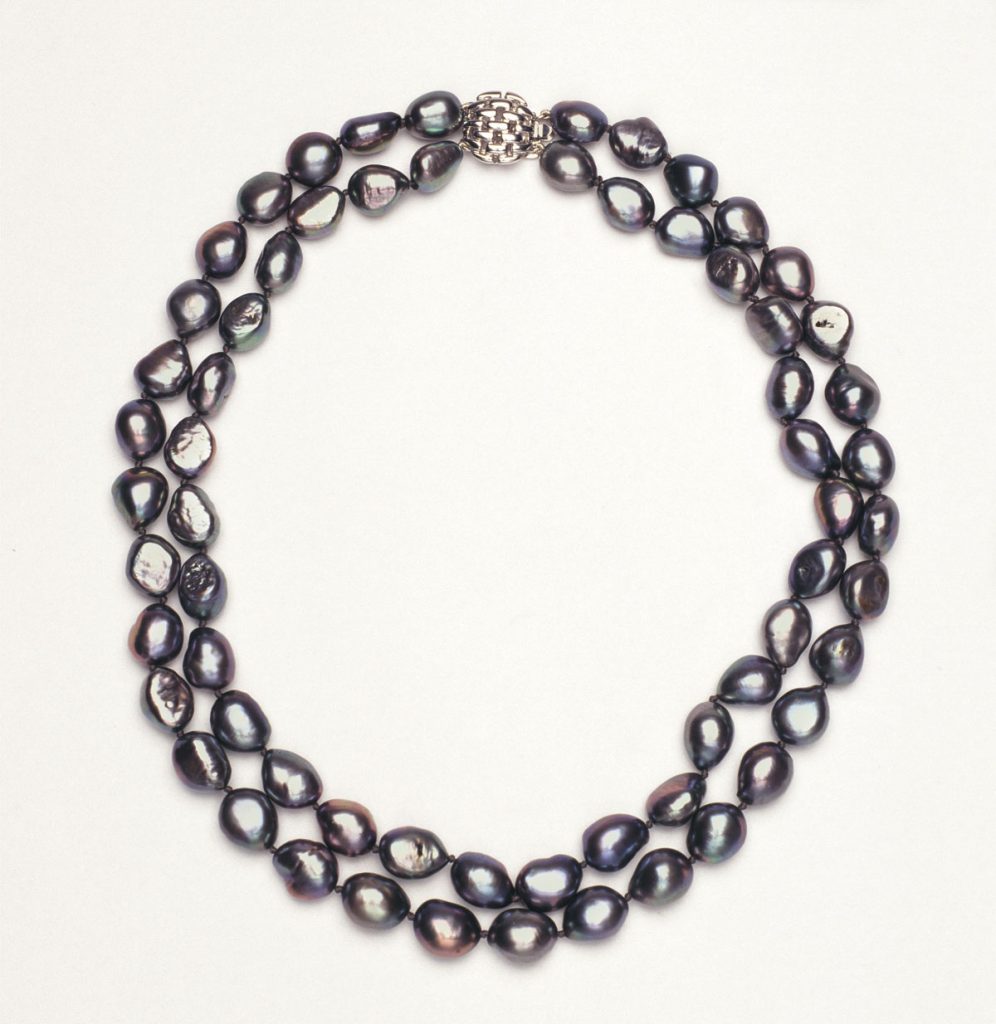
Freshwater Coin
Jack Weinhold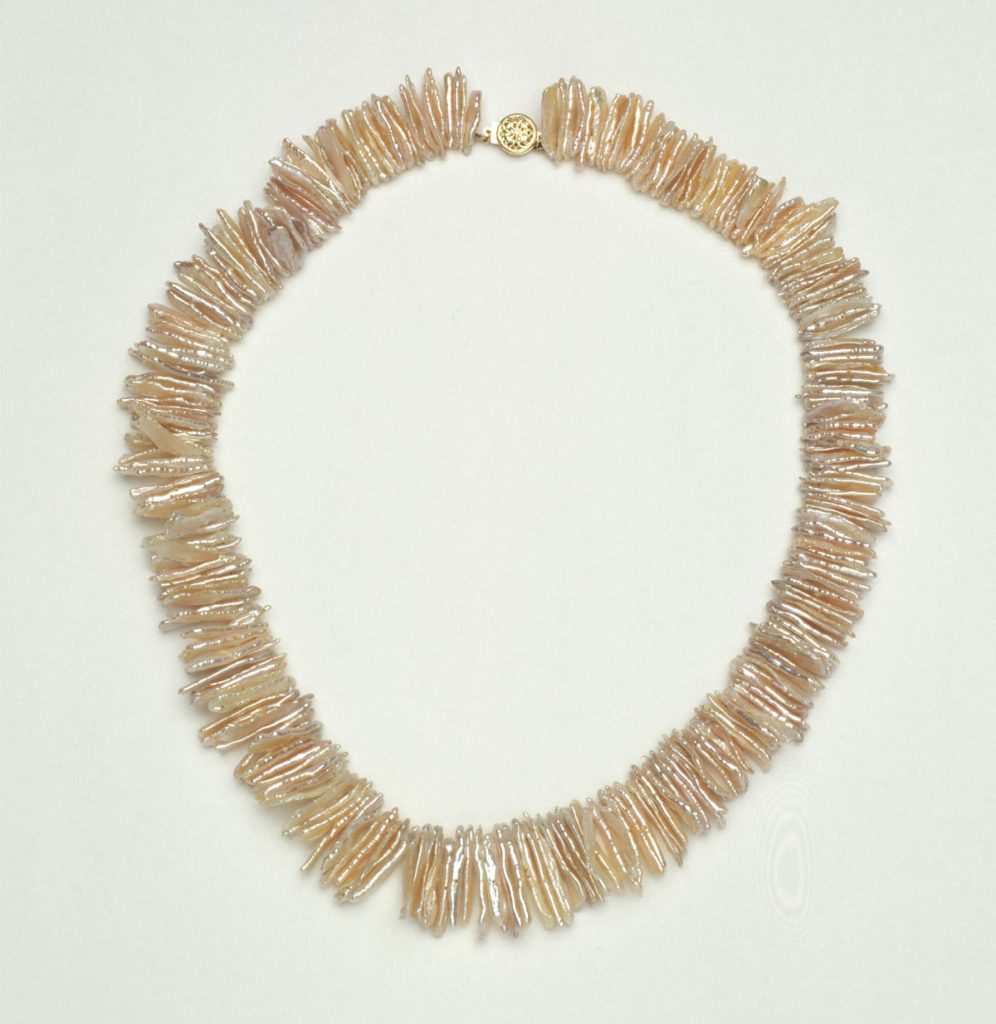
Freshwater Stick
Jack Weinhold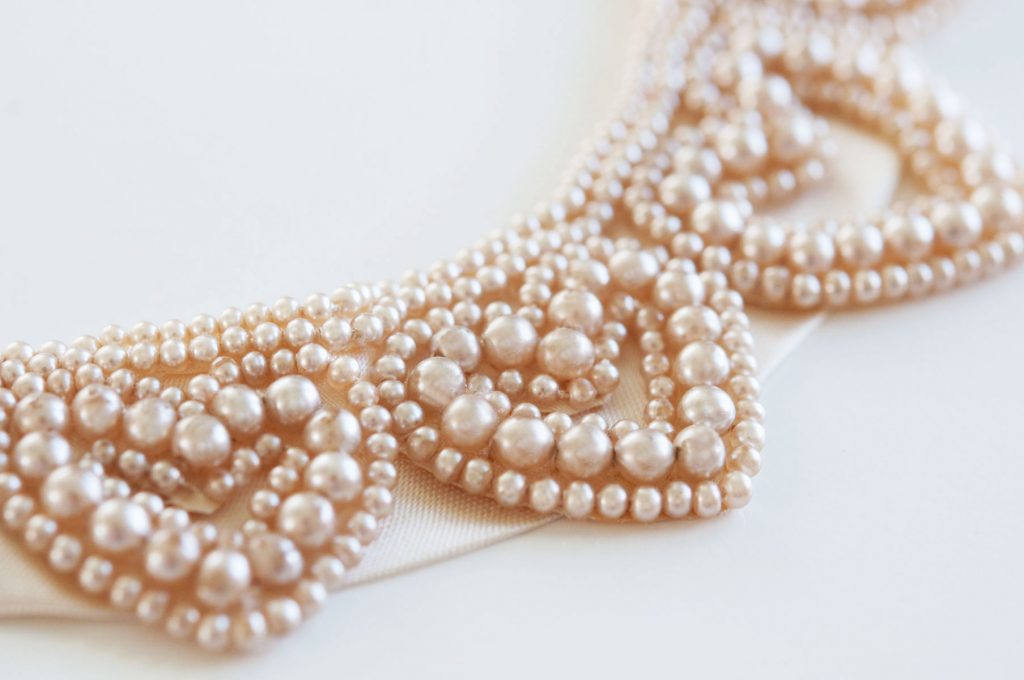
Vintage pearl collar that adorned a cardigan sweater
Natural Versus Cultured Pearls
WHAT IS THE DIFFERENCE?
The only difference is whether man or nature implanted the foreign particle around which the pearl (pearl nucleus) forms in the oyster. The nucleus is a grain of sand (introduced by nature) or an implant bead (introduced by man), around which the pearl develops. The production process and the result are the same.
NATURAL PEARLS
A natural pearl is the result of a marvelous reaction to external stimuli. When a foreign particle enters an oyster and it cannot be discharged, a pearl is formed. The oyster begins to coat the particle with calcium deposits. The coating of calcium deposits is called the nacre of the pearl. The thickness and the quality of the nacre provide the pearl’s luster.
CULTURED PEARLS
Today, man has joined forces with nature to create the cultured pearl. This cultivation involves the farming of host oysters that have been implanted with a particle (bead) by man. The center of this industry is in Japan, on large oyster farms. The mollusks are carefully tended (suspended in wire baskets from wooden rafts) for three years. At this time, they are taken from the sea, and a bead (the nucleus of the pearl) is placed inside the body of the oyster (or other mollusk). The natural coating mechanism of the oyster (nacre production) begins, producing a pearl. The oysters are returned to the warm water, where the pearl develops for the next two to four years. Only 20 percent of pearl implants result in a complete pearl. At this time, the pearls are at their peak of beauty and are ready for harvesting.
The harvest is sorted according to size and color. The pearl industry recognizes these colors as acceptable: white, cream, pink, green, blue and black.
Before you buy pearls there a a few things you should know.
BEFORE YOU BUY
Know that fakes and impostors abound. Ask for receipts that state you’ve bought a “South Sea Cultured Pearl” or “South Sea Natural Pearl” (before 1899 you couldn’t buy a cultured pearl). This holds the store legally responsible.
“South Ocean Pearl,” “South Pacific Pearl” and “Majorca Pearl” are all terms for fakes.
If you see what seems to be a fantastic pearl discovery in a store or at a flea market, do the quick “tooth test”: Slowly and gently rub the pearl against your teeth. If it has a gritty feel, it’s real. Fakes are smooth and slippery. This is the best quick test I know of!
HOW TO BUY A PEARL
A number of factors affect the appraisal of a pearl’s quality. A sound investment depends upon your knowledge of them. Always buy from a reputable jeweler.
SIZE
The size is measured in millimeters.
SHAPE
Button or three-quarter pearls are pearls with round tops and flattish bottoms. They are produced by freshwater and saltwater bivalve mollusks both naturally and by cultivation. They are not to be confused with Mabé pearls, also called assembled dome, chicot or button pearls.
Mabé pearls are formed by placing a plastic dome between the mantle and shell of an anesthetized pearl oyster. Nacre is secreted over the plastic and in a year or less, the mollusk is opened and the pearl is cut out and the plastic molds are removed.
The hollow is filled with a paste for support. The paste can be colored, showing through the transparent nacre to produce a differently colored pearl. To complete the production, a piece of mother-of-pearl is glued on the bottom side.
Potato or corn pearls are produced by freshwater bivalve mollusks in China and are off-round in shape and resemble small oval potatoes or corn kernels.
Baroque pearls have irregular and interesting shapes. Originally applied to pearls, this French adjective was later used to describe architecture, art and music. Baroque pearls were used throughout European history to create whimsical pendants and figurines.
Keshi (adventitious or chance pearls) are one of the main types of baroque pearls. Today, the term keshi is reserved for larger chance pearls, up to 10 millimeters, associated with cultured Pincatada in Tahiti, Indonesia, Australia and the Phillipines. They are popular to use in modern jewelry.
LUSTER
Luster refers to the surface shine and beauty. Check the luster while standing with your back to a source of light. The sharper you see your reflection on the surface of the pearl, the higher the luster and, therefore, the better the quality of the pearl. Luster is determined by a number of properties.
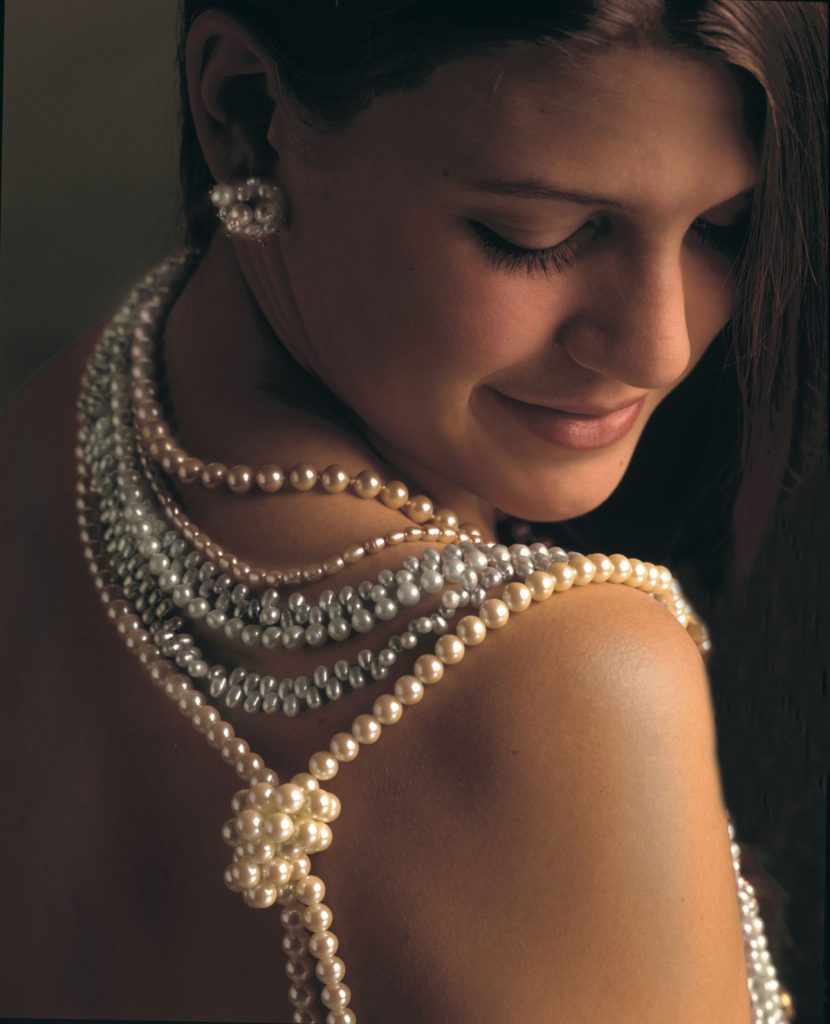
- Surface – Pearls with cracked or pitted surfaces have low luster.
- Nacre Thickness – Natural pearls are well formed entirely from layers of nacre. In cultured pearls only the outer layer is formed by nacre. So, the thicker the nacre, the higher the luster.
- Structure of the Nacre – When nacre crystals are well formed and aligned, pearls will have a high luster.
- Percentage of Conchiolin – Conchiolin is opaque and does not reflect light as well as nacre does. Pearls with a high concentration of conchiolin lack luster.
COLOR
Pearls come in a variety of colors with the major classifications being white, pink, cream, silver, gold and black. Most people think of pearls as white. Experts describe a pearl’s color as having a predominant color (the body color) and a secondary color (the overtone or tint). These overtones are usually rose, green or blue. The best way to observe the overtone in white pearls is to view the pearl on a white background in direct light. The outer rim will reflect the white background and the overtone will appear in the dark area in the middle of the pearl. The color of a pearl should emanate from deep within the center of the pearl. All the pearls in a matched strand should be consistent in color.
SURFACE
Just as with any product of nature, ALL cultured pearls have minor imperfections. A quality pearl is free of large pits or blemishes. The best way to form an overview of these qualities is to take a strand and lay it on a smooth surface (jewelry cloth or glass) and roll it slowly by holding each end. You can see the roundness, luster, color and surface imperfections all at once. Any loss of nacre shows up clearly.
It is apparent that pearls are a remarkable gift of nature
Types of pearls
AKOYA
The traditional cultured round pearl, smaller than the South Sea, produced in oysters of Japan.
SOUTH SEA
Exceptionally large, cultured pearl from oysters, found only in the South Seas, in iridescent shades of white, cream, silver-pink and gold.
BLACK OR TAHITIAN
Also South Sea-cultured, also mega-size potential, from black-lipped oysters, in shades of silver-gray, green, peacock black and black.
SOUTH SEA KESHI
A fluke, these often flattened, cornflake-shaped pearls grow on their own alongside a cultured pearl within the oyster shell.
BAROQUE
An irregularly shaped pearl of any kind, these can be a teardrop, bumpy or ridged. Very trendy now – style mavens love their earthy, imperfect beauty.
Caring for Pearls
Pearls can absorb perfume and skin oil, as well as dirt. They are much softer than harder gemstones and can easily be scratched or affected by chemicals. They can also crack if exposed to excessive dryness. They can last for millennia, under the right conditions.
- Clean them regularly by wiping them gently with a clean soft cloth.
- Wash occasionally in mild soapy water, as acidic oils and perspiration from human skin can damage the surface.
- Never clean in an ultrasonic cleaner. If the nacre is thin or cracked, the vibrations may shatter the pearl.
- Do not use chemicals to clean them, especially those containing bleach or ammonia, as they can erode the surface of the pearl.
- Putting pearls on after having applied perfume or makeup will still not protect them from absorbing these products.
- Do not wear in a chlorinated swimming pool.
- Protect them from extreme temperatures and chemicals (vinegar, alcohol, ammonia and hair spray) which can erode their surfaces.
- Expose them regularly to humid conditions. If stored in a safe, store a glass of water in with them for humidity.
- Never close pearls in an airtight container. Allow them to breathe.
- Pearls may chip or pit, so keep them away from other jewelry. Store them in their own box with a soft-liner or pouch. Never store them on a hard surface or with metallic jewelry.
- There can be some hope for damaged pearls. This process is known as pearl peeling or skinning It is a process whereby outer layers of nacre are removed to reveal an unblemished layer. It does not always remove the blemish, but it is worth trying to transform a damaged pearl into a priceless one again.
- Have them restrung periodically (every two years). Most jewelers use silk thread with a knot between each pearl. This prevents abrasion and, if the string isbroken, all are not lost.
Note: Before you leave your pearls to be re-strung, have the size of the pearls measured and count the number of pearls on the strand. Have the jeweler mark this on your jewelry slip. All jewelers will be happy to do this for you.
Article edited. Full version available in ONLY NANTUCKET FALL/WINTER 2014.
